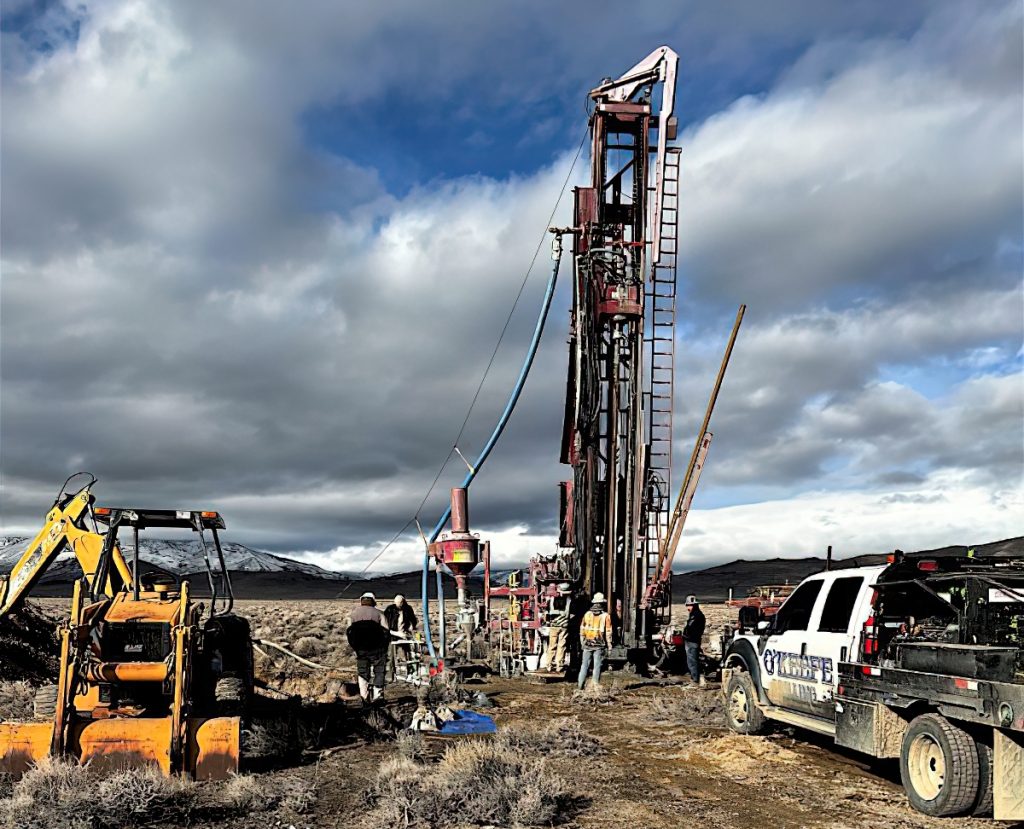Nevada Sunrise Metals plans Coronado Copper Project drilling, Nevada

Nevada Sunrise Metals Corp. [TSXV-NEV; OTCBB-NVSGF] has initiated a geological and geophysical data review on its Coronado Copper Project located in Pershing County, Nevada, approximately 48 km (30 miles) southeast of Winnemucca. The purpose of the Coronado data review is to identify new, shallow drill targets in an area of the project where historical drilling in 1976 identified high-grade copper mineralization.
Highlights: Coronado is located in an underexplored region that hosts a past-producing volcanogenic massive sulphide (VMS) deposit known as Big Mike, where high-grade copper was mined in the early.
VMS deposits such as Big Mike are often found in chains or clusters along zones of structural weakness, where such deposits may be buried under overburden and exhibit no surface exposure – only one VMS deposit has been discovered to date in the Project area.
Nevada Sunrise plans to explore a new target area in the northern part of Coronado known as the Red Metal prospect, where Utah International intersected shallow, high-grade copper mineralization in 1976 drill hole C-1, which reportedly returned 1.84% copper over 10.98 metres (36 feet) from 39.9 metres (131 feet) to 50.9 metres (167 feet).
The company is commissioning a new desktop study of its Coronado 2018 Versatile Time Domain Electromagnetic (VTEMTM) data using a computer modeling process to determine the Airborne Inductive Induced Polarization (AIIP” effect, which can measure chargeability of potential sulphide minerals and add to the interpretation of conventional airborne electromagnetic (EM) data. Other geophysical anomalies were observed in the 2018 airborne survey data, which Nevada Sunrise plans to investigate on the ground.
Nevada Sunrise plans to carry out an AIIP effect study by Geotech Ltd. on the 2018 Coronado VTEMTM airborne survey data. AIIP chargeability mapping opens new avenues in mineral exploration for airborne time domain electromagnetic systems in the search for sulphides, especially in terrain with substantial overburden that can mask conventional electromagnetic responses.
Other geophysical anomalies observed in the company’s 2018 airborne data are being reviewed, including the “Mikey” target, located approximately 600 metres (2,000 feet) southeast of the historic Big Mike open pit mine.
Geotech also offers Structural Complexity (SC) analysis of historical VTEMTM data using a method introduced by Kovesi (1997).
Nevada Sunrise plans to carry out a prospecting and geological mapping and sampling survey over significant geophysical anomalies identified from the AIIP modelling program. Any identified geophysical anomalies will be gridded and sampled with a soil gas hydrocarbon (SGH) survey, an economical soil sampling method developed by Activation Laboratories of Ancaster, ON, Canada, which is known to detect subtle geochemical anomalies over buried mineral deposits. In conjunction with newly-acquired geophysical data, SGH could assist in the development of new drill targets in Coronado’s underexplored terrain.
The Company holds an active drill permit for Coronado, which is good until October 2024.
Coronado currently consists of 152 unpatented claims totaling approximately 3,040 acres (1,230 hectares) located over an interpreted trend adjacent to the historic Big Mike copper mine that lies within the Middle Pennsylvanian to Late Permian-age Havallah volcanic-sedimentary sequence. The company’s land position controls an important seven mile-long (11.3 km) regional trend along which high-priority airborne VTEMTM anomalies have been identified within the Early Pennsylvanian–early Late Permian Pumpernickel Formation of the Havallah sequence.
In 1970, Ranchers Exploration and Development Company developed the high-grade portion of Big Mike and produced approximately 25 million pounds of copper in 100,000 tons of ore grading 10.5% copper that was shipped directly to smelters in West Germany and Japan. Heap leaching of lower-grade disseminated copper ore was also carried out by Ranchers; approximately 300,000 tons of mineralized rock was treated. Historical sampling also shows the presence of cobalt at Big Mike, with values in the deposit ranging up to 2,500 parts per million (0.25%) cobalt.
Nevada Sunrise optioned the Project from local vendors in 2018 and has carried out exploration in several campaigns including a high-resolution airborne VTEMTM survey, a follow-up ground gravity survey, an SGH geochemical survey, and a total of three diamond drill holes in 2018 and 2020.
The company’s 2018 airborne EM survey outlined a strong conductive system located within favourable geology in conjunction with an SGH anomaly, supporting the Company’s belief that VMS deposits could be present at the Project. The U.S. Bureau of Land Management has approved nine drill hole locations throughout the project, where each location can host multiple holes. In the drill testing performed by the company to date, difficult ground conditions hampered the effectiveness of the three drill holes, none of which provided a definitive test of the targeted geophysical anomaly at Coronado South.
The Company’s key gold asset is a 18.74% interest in a joint venture with CopAur Minerals Inc. at the Kinsley Mountain Gold Project near Wendover, NV, where a NI 43-101-compliant resource has been outlined by historical drilling carried out by Liberty Gold Corp. and New Placer Dome Gold Corp. from 2011 to 2020.
Nevada Sunrise can earn a 100% interest in the Coronado VMS Project. Nevada Sunrise owns 100% interests in the Gemini, Jackson Wash and Badlands lithium projects, all of which are located in the Lida Valley of Esmeralda County. The company owns Nevada water right Permit 86863, located within the Lida Valley basin near Gold Point, Nevada.
